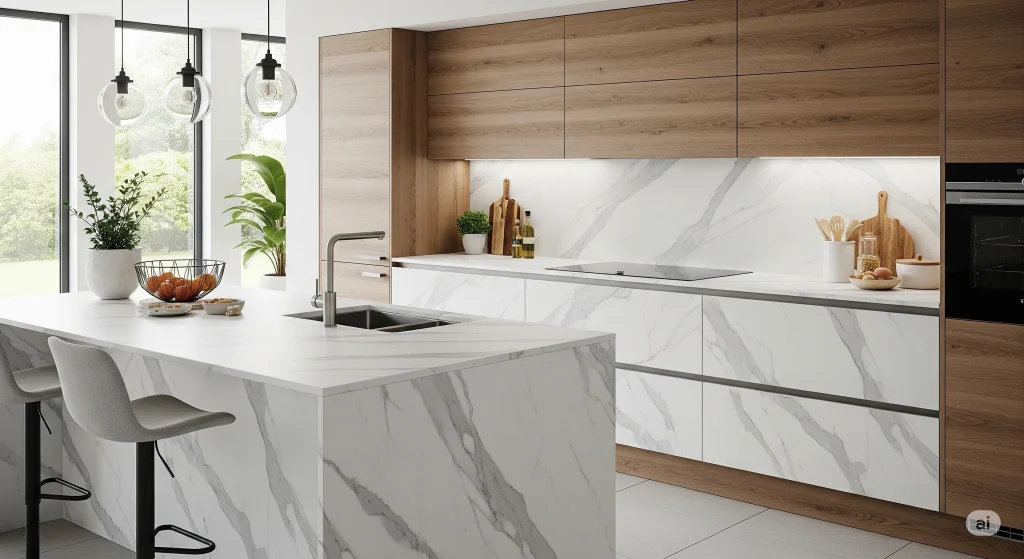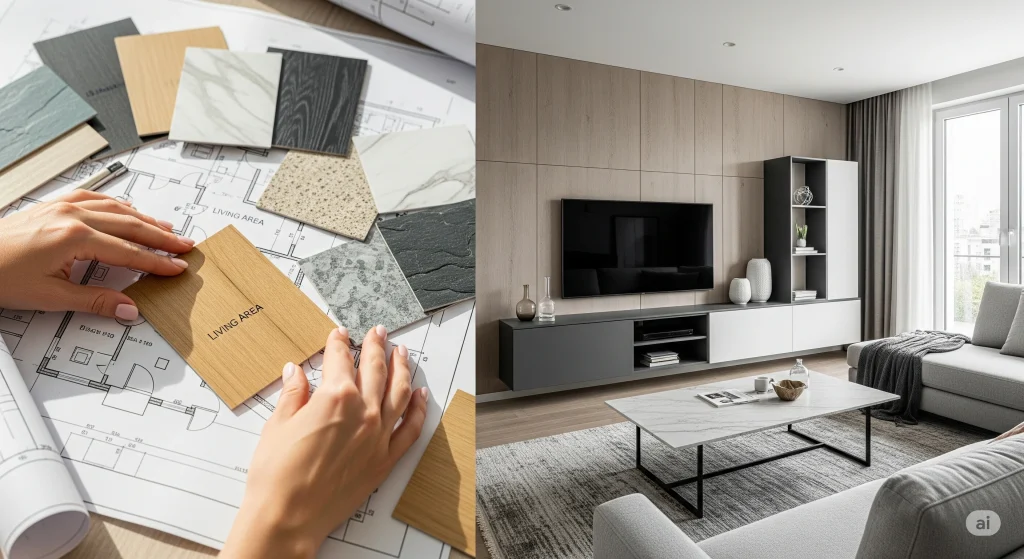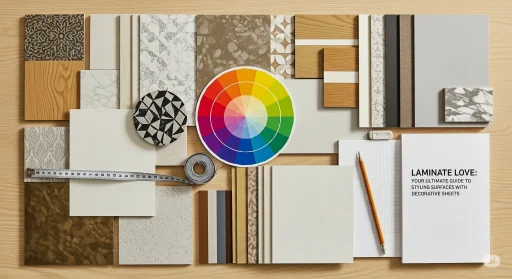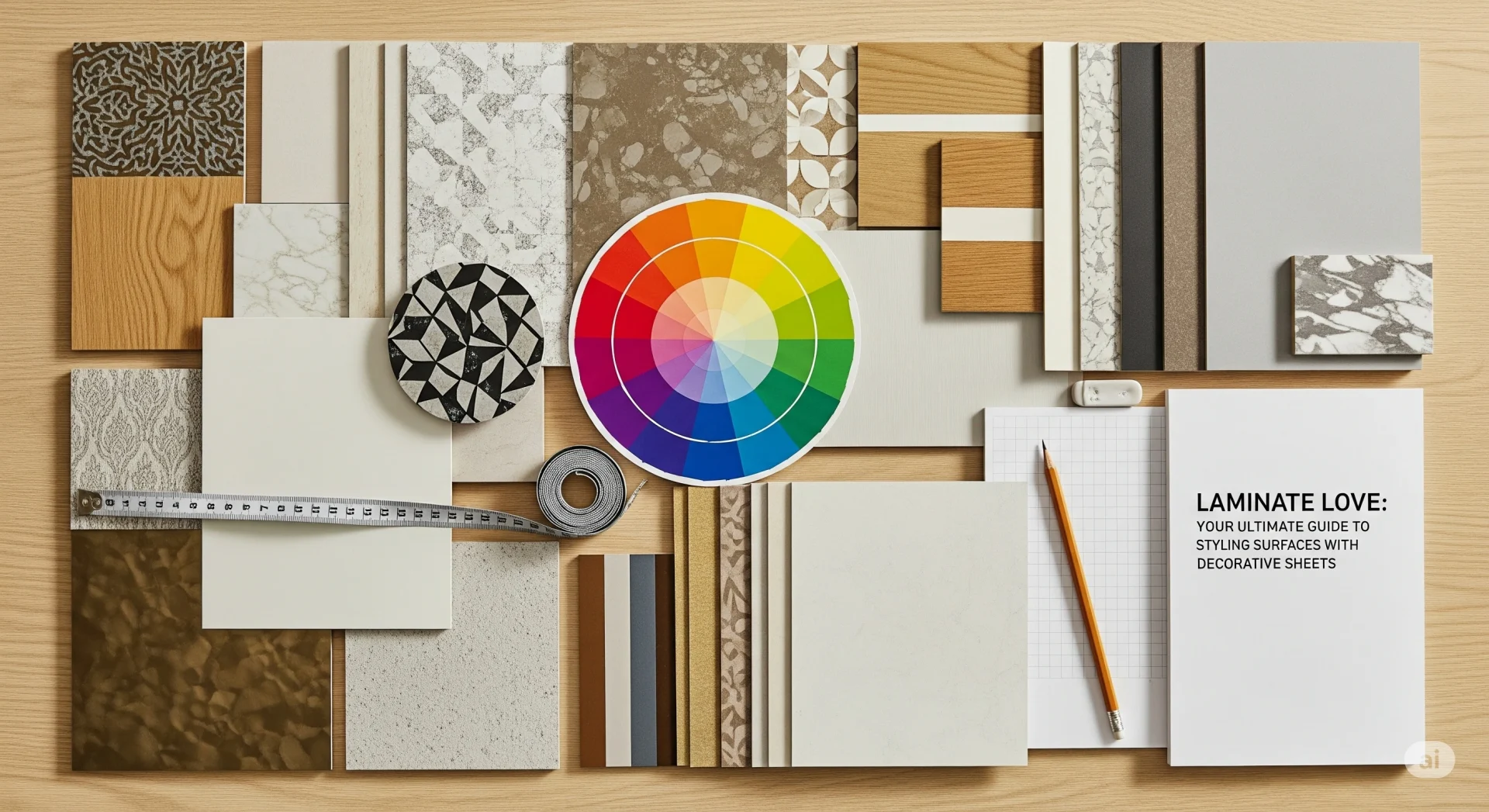Enter any modern office or house You’ll see them. They adorn the kitchen cabinets, add the look of our wardrobes, give new life to our tables and even adorn our walls. These are the decorative laminates as the unspoken designers for interior designs. These flexible sheets have changed our perception of surfaces and offer a striking combination of durability, beauty and value. What is their purpose?
This thorough guide will take you through all you must learn regarding decorative laminates. We’ll look at their composition as well as their many varieties of finishes and types, as well as then highlight the amazing benefits they can offer in any work. Additionally, we’ll explain the best places to use them, and how to pick the best one for your requirements. So, prepare to peel away the layers and explore the possibilities of laminates!

What Exactly Are Decorative Laminates
In essence it is a specialized surface material. Consider it an extremely tough and attractive skin for walls and furniture. It’s not just one layer of plastic.
Let’s look at the anatomy of it:
- The Base Layer (Kraft Paper): The foundation of a laminate sheet comprises of several layers of kraft papers the same sturdy brown paper that is used in grocery bags. The paper is then soaked with a phenolic resin which is a kind of plastic that makes the paper tough and durable. It is also resistant to moisture after it has been dried. This provides the laminate with its thickness and stability as well as impact resistance.
- The Decorative Layer: In the middle of kraft papers is the main attraction which is it’s the decorative layer. This is a top-quality printed paper that is adorned with the design, regardless of whether it’s a solid color, wood grain patterns or a stone texture as well as an abstract design. The printing technology employed is extremely advanced, allowing to create stunningly realistic and detailed designs.
- Protective Overlay: The last, most visible layer is a translucent protective sheet. The layer is filled with melamine resin. It is a extremely durable and hard type that is a thermosetting polymer. This layer gives the laminate its resistance to stains, scratches, heat, as well as everyday damage. The laminate is given its final look, which could be smooth, matte or even textured.
These layers are then put together in a presses. The press produces massive heat (around $150circ$C or $300circ$F) as well as tension (over 1000 pounds for every square inch) and causes the layers of resin to bond in a permanent way. This process, also known by the term thermosetting is what creates a solid, single and extremely durable sheet.
Read Our Book: The Complete Technology Book on Wood and Its Derivatives
The Many Faces of Laminates: Types and Finishes
Decorative laminates aren’t an all-purpose product. They are available in a wide assortment of styles, textures and finishes that allow unlimited creativity in interior design. Knowing the differences will help you choose the best material for your particular needs.
Key Types of Laminates
- HPL (HPL): This is the most widely used and long-lasting type of laminate that is decorative. Made under extreme pressure (typically more than 1,000 PSI), HPL is robust and scratch-proof, making it perfect for areas with high traffic like kitchen counters offices, desks for office workstations, and checkout counters in retail stores.
- Low-Pressure Laminate (LPL): Also known as melamine boards LPL is created at a less stress (around 300 to 500 PSI). In this method it is attached to a substrate, such as MDF or particleboard. Although not as robust like HPL, LPL is more affordable and is a popular option for shelving, cabinets and furniture that isn’t subject to much use.
- Compact Laminates: They are extremely thick self-supporting, self-supporting laminates (usually larger than 3 millimeters). Because they are extremely dense and durable they do not need to be fixed to the substrate. They’re great for creating bathrooms cubicles, lab tables, and lockers since they are extremely resistant to humidity and water.
- Post-formable Laminates: These specially-designed laminates are specially designed to be heated before being bent to create smooth, curly edges. This reduces sharp seams you find on laminate applications that are standard and makes it ideal for the creation of contemporary, seamless countertops as well as tabletops.
Know More About Decorative Laminated Sheets
A World of Finishes
The finishing of laminates can affect its appearance and the feel. It can totally alter the look and feel of the surface.
- Matte Finish: Smooth, reflective surface that won’t show marks easily. It gives a soft modern, elegant, and sophisticated appearance.
- Glossy Finish: It’s a shiny reflective coating that lets the colors pop and brightens an area. It adds a bit of glamour and is simple to clean, but it may show smudges and scratches more easily.
- Textured finish: The laminates feature the appearance of the natural material’s feel. You can discover textures that feel similar to genuine stones, wood grains or even soft fabrics. This gives authenticity and depth to the overall design.
- Special Finishes: Innovation doesn’t end there! There are laminates that have special properties such as anti-fingerprint surfaces (perfect for use in the kitchen) the magnetic qualities (great for rooms for children or office spaces) as well as anti-bacterial qualities that are ideal for healthcare.
Read More: Strategic Guide to Starting a High Pressure Laminate Manufacturing Business in India
Why Choose Decorative Laminates? The Big Advantages
Laminates are gaining popularity due to several convincing reasons. They provide an efficient and fashionable solution that can be adapted to a broad spectrum of budgets and requirements.
Unbeatable Durability
Due to their melamine-based top layer and the high-pressure manufacturing process Laminates are made to last. They stand up well to the demands of everyday life, restraining the ravages of keys and scratches, as well as stains caused by spilled coffee and discoloration from the sun. They are a solid option for busy homes and commercial areas.
A Universe of Designs
Whatever your aesthetic–minimalist, rustic, industrial, or classic–there’s a laminate for you. The possibilities for design are infinite. You can enjoy the elegant appearance of Italian marble as well as the soft wooden feel of oak wood or the smoothness of brushed metal and all without the costly costs and upkeep of genuine materials.
Easy on the Wallet
This is possibly one of the most attractive features. Laminates with decorative features offer a luxurious appearance for less than the price of natural materials such as granite, solid wood, or veneer. The affordability of laminates lets you achieve an exquisite look without spending a lot of money, while freeing the budget to invest in other areas of your work.

Simple to Maintain
Life can be complicated enough, your surfaces shouldn’t have to be. Laminates aren’t porous and extremely easily cleaned. Simple wipes with mild soap, a wet cloth and some water is generally enough to get rid of any spills and dirt. Like wood, laminates do not require regular cleaning or sealants.
Hygienic and Safe
The non-porous layer of laminates stops the growth of mold and bacteria and makes them a clean choice for bathrooms and kitchens. There are many manufacturers that provide laminates with anti-bacterial properties that provide an additional layer of protection.
Project Report: Start Production of Decorative Laminated Sheet (Sunmica)
Where Can You Use Decorative Laminates
The variety of decorative laminates is that you can apply them virtually anywhere to increase the aesthetics and practicality of your space.
- In the kitchen In the Kitchen: This is a traditional application. Laminates are ideal for countertops, kitchen cabinets or the backsplash of kitchens. They are resistant to stains, heat and moisture make them an ideal and fashionable option for this space that is hard to work in.
- In the Bedroom: Redesign your bedroom by adding laminate-finished headboards, cabinets and tables for studying. A wood-grain laminate could create a warm and cozy space, while solid colors can provide an elegant, modern look.
- In the Living Room: Make use of laminates to make gorgeous television units, bookshelves coffee tables, or walls. A wall covered with a textured stone or wood laminate could become an impressive focal area.
- In commercial spaces: Laminates are the most popular material for restaurants, and retail stores. They are utilized to make reception tables, furniture for offices display shelves for products as well as cash counters and wall paneling that gives the durability and professionalism you expect from a appearance.
- Doors: Doors with laminates are popular because they are durable, easy to maintain, and come in a variety of styles to fit any style of interior.
Want To Know About Which Business Idea Would Be Better For You?
Go Through Our Startup Selector Tool
Conclusion: The Smart and Stylish Surfacing Solution
Laminates with decorative features are beyond a simple cover for surfaces; they’re powerful tools for design. They enable homeowners as well as architects, designers and homeowners to bring their visions to life, without being hampered by the cost or maintenance requirements that natural material. Through blending the latest technology with an aesthetic appeal, they offer the perfect blend of aesthetics, strength and sensitivity.
When you’re planning to renovate your house or planning an entirely new business space, these flexible sheets are a reliable long-lasting, beautiful, and durable solution. If you ever are planning an interior design project think about the potential of one simple piece of laminate.
Decorative Laminate: Frequently Asked Questions (FAQ)
1. What is the distinction between veneer and laminate?
The main difference? Laminates are layers of resin and paper—totally man-made. Veneers are thin slices of real wood. Veneers look and feel fancier but cost more and need extra care.
2. Are laminates for decorative purposes waterproof Are they water-resistant?
Laminates can handle spills. But if water slips into the edges and hits the MDF or particleboard, it’ll swell and get ruined. Wipe spills fast and seal the edges, especially in kitchens and bathrooms.
3. Are laminates a DIY project that I can install by myself?
You can try installing laminate yourself, but pros do it better. Carpenters have the right tools and know-how, so you get smooth edges and no bubbles.
4. What can I do to maintain and clean my laminate surfaces?
Cleaning is simple. Wipe with a damp cloth—microfiber works great. For tough stains, use mild soap and water. Skip harsh chemicals and anything scratchy.
5. How long will decorative laminates last?
Good-quality laminate lasts 10–15 years if you treat it right. How long it lasts depends on the material, installation, and how much you use it.







